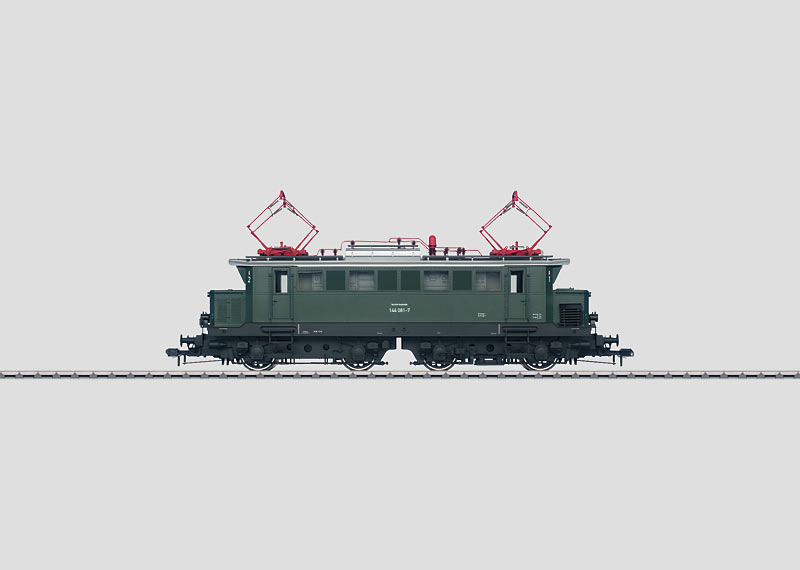Electric Locomotive.

| Article No. | 54293 |
|---|---|
| Gauge | 1 |
| Era | IV |
| Kind | Electric Locomotives |
Product description
Model: The locomotive is constructed of metal with applied plastic parts. It has an mfx digital decoder, controlled high-efficiency propulsion, and a sound effects generator. The locomotive can be operated with AC power, DC power, or with Märklin Delta, Märklin Digital, or Märklin Systems. 2 motors. 2 axles powered. The headlights will work in conventional operation and can be controlled digitally. The locomotive has older design pantographs. The engineer's cabs have interior details and doors that can be opened. The locomotive has separately applied metal grab irons. Minimum radius for operation 600 mm / 23-5/8". Length over the buffers 47.8 cm / 18-13/16".
Publications
- Product programme 2007/2008 - New items brochure 2007 - Product programme 2008/2009Prototype information
77 Years of the E 44. After an interruption due to the great economic crisis, the electrification of the German State Railroad's network was continued starting in 1932. New, powerful locomotives were needed for the new routes. In the meantime, the German railroad industry had developed new concepts and prototypes for modern general-purpose locomotives. This design from Siemens showed clear progress compared to the provincial railroad designs of before that had been merely developed further. This unit was designed as a lightweight, general-purpose locomotive and was built on a welded frame, mounted on trucks with integrated buffer beams and powered with axle-suspended motors. This gave this compact locomotive a total weight of 78 metric tons without the need for pilot trucks and still below the critical 20 metric ton limit for axle loads. The modern motors" output of 2,200 kilowatts / 2,950 horsepower was available directly at the axles without the need for an expensive mechanism. The maximum speed reached on level track was 90 km/h / 56 mph. The first unit was successfully tested and placed into service by the German State Railroad as early as 1930 as the E 44 001. Additional regular production locomotives with a maximum speed of 80 km/h / 50 mph were ordered immediately, initially for the route from Stuttgart to Augsburg (with the Geislingen Grade). The German State Railroad purchased a total of 174 regular production locomotives, of which 45 remained in East Germany. Seven more locomotives were built new for the German Federal Railroad and several were equipped with push/pull controls or resistance brakes. The indestructible E 44 was in regular use well into the 1980s - at the end as the 144 (DB) and 244 (DR).
Features
Warning
| Control Unit | Mobile Station | Mobile Station 2 | Central Station 1/2 | Central Station 3/2 | |
|---|---|---|---|---|---|
| Headlight(s) | X | X | X | X | X |
| Electric locomotive op. sounds | X | X | X | X | X |
| Locomotive whistle | X | X | X | X | X |
| Telex coupler(s) | X | X | X | X | X |
| Letting off Air | X | X | X | X | |
| Main Relay | X | X | X | X | |
| Sound of Relays Clicking | X | X | X | X | |
| Direct control | X | X | X | X | |
| Sound of squealing brakes off | X | X | X |